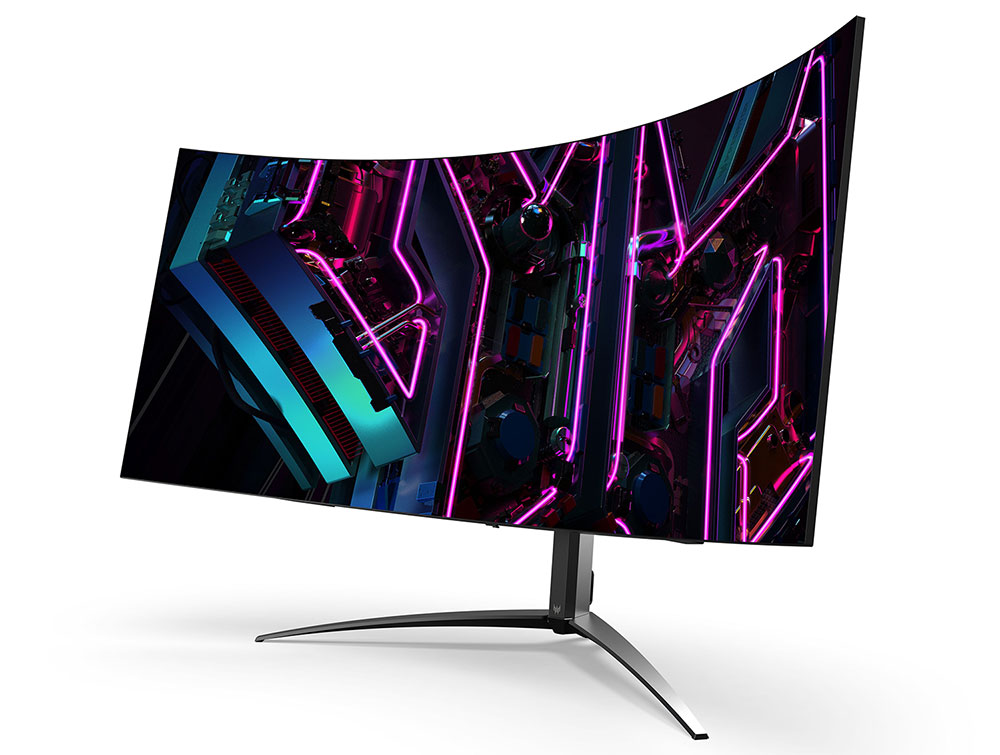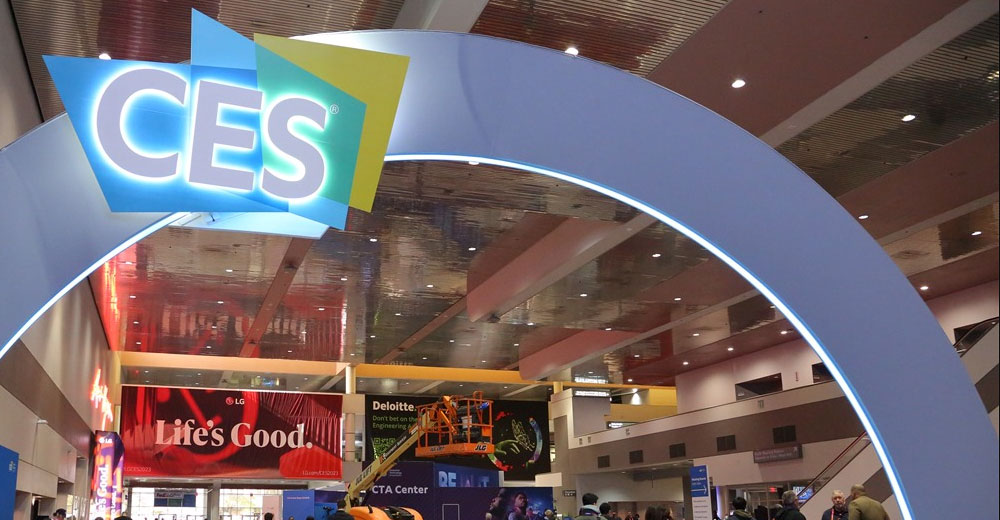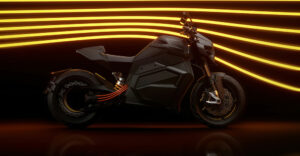Often, much of the interesting drama at CES happens off the floor by firms that aren’t directly participating in the show. That was true again this year when Lenovo and Nvidia stood out from their peers by aggressively moving in a variety of directions and showcasing a depth of products that were largely unmatched in their segments.
Let’s talk about how these two vendors differentiated from their peers at CES last week, and we’ll close with my Product of the Week, a new monitor from Acer that is suddenly at the top of the products I’m already lusting for this year.
PC OEMs
Acer, Dell, HP, and Lenovo all came to play at CES this year, and each had some attention-grabbing prototypes to showcase. However, Lenovo had the most interesting products coming to market, and several caught my eye as potential game-changers.
I’ll break these down by manufacturer.
Acer
What really looked interesting from Acer was its Spatial Labs TrueGame technology, designed to provide realistic 3D upscaling for games typically played in 2D. I tried a similar technology from Nvidia nearly two decades ago. While the depth of field was interesting, the game’s objects remained 2D, so it was like walking through a movie set where nothing had depth, and everything was a false front.
What Acer showcased was full 3D rendering where the objects were 3D, as well, giving a depth to games that you don’t see today.
Acer also teased an Orion X desktop that looked like it might be revolutionary (they didn’t provide any details) and two large-screen laptops (16″ and 18″) with a 13th-generation Intel processor and AmLED displays running at 240-hertz refresh rates, potentially making them impressive gaming and productivity laptops.
Dell
Dell’s most interesting product was also a prototype, but in this case, a prototype controller that could be used on planes to play PC games on your laptop. This has been a long-term annoyance for me as I tend to fly a lot, and I like to game because it makes hours go by like minutes, which is ideal for long trips if the tray table is big enough for a mouse, which it usually isn’t.
I’ve long felt that a game controller designed for PC games would fix this problem, but no one made one. Fortunately, Dell is looking at creating one. Assuming the project gets the green light, it could change in-flight gaming significantly.
The other thing Dell showcased was a significant development for Concept Luna, its sustainable laptop. This breakthrough made it possible for a remotely located robot to reconfigure a Concept Luna device somewhere, like in the middle of a Best Buy. Think of a large robotic vending machine where you put in your laptop and credit card and watch as your device is customized and upgraded with the latest graphics, processor, battery, case, or screen.
This innovation would allow indefinite upgrading of the laptop, keeping it out of landfills and assuring it was uniquely yours and always up-to-date, potentially avoiding premature obsolescence.
HP
HP has been preloading Nvidia’s GeForce Now gaming platform for some time on its consumer notebooks (I’m noting this because I didn’t know HP was doing this), allowing laptops without discrete GPUs to play high-end PC games in the cloud.
The company showcased prototype 3D-printed keyboard caps, which didn’t make a ton of sense to me since the resulting keys would be awkward to use. Still, this promised a potential future where this same technology could provide custom cases, laptop enhancements, and accessories only limited by your imagination.
HP also demonstrated the most aggressive use of recycled materials in its PCs and continues to lead the segment with active recycling and use of recycled materials.
It is interesting to note that Dell’s and HP’s sustainability approaches would layer on each other and that both efforts would benefit from deeper collaboration between the two vendors. For instance, HP could create the 3D-printed parts that Dell’s Concept Luna customization robot would use.
In the future, I expect HP’s real power will emerge once it figures out how to integrate better its 3D printing solutions that now include metals with its PC offerings. This is the first time I saw that trend actualize.
Lenovo
Lenovo blew my socks off with several products. While its peers’ most interesting showcases were prototypes where final products weren’t announced or may never materialize, Lenovo came to play with products that will exist in 2023.
The initial product that stood out as potentially revolutionary was a laptop with twin screens. Unlike prior offerings that put the second screen beside the first or a smaller screen next to the keyboard, this one stacked the screens one on top of the other.
This design made great sense because when you are on a plane with a laptop, you have limited width but far less limited height. By putting the second screen on top of the first, you raise it to the perfect height for watching a movie or playing a game on a plane.
Lenovo is the only PC OEM other than Apple that has a smartphone business, and it announced the ThinkPad smartphone called ThinkPhone that addresses a problem the industry has had ever since BlackBerry exited the phone business: the lack of an iPhone-like, business-focused phone with better security, greater durability, and a more business-oriented appearance.
ThinkPad is as powerful a brand in the business space as Apple is in the consumer space, and I’ve been monitoring requests for a phone like this from everyone, from banks to governments. This year, Lenovo stepped up with what could be a game-changer.
Finally, Lenovo announced an Android tablet. While we haven’t seen one of these in a while, Android positions better against iOS than Windows or Chrome OS, and the result is far more like the iPad.
Chip Vendors
AMD and Intel stayed close to their knitting, showcasing the latest advancements in CPUs and graphics. Both firms have made solid advancements but seem so focused on each other that they are missing the bigger picture, which Nvidia again highlighted with its keynote on the Tuesday before the show.
Nvidia Shines
Nvidia almost appears to be in a different class in that it showcased an increasing cradle-to-grave capability for anything built in future factories that uses AI.
For autonomous electric cars, Nvidia is involved in the conception of the vehicles, the design of the factories, the design and programming of assembly robots, in both the operating and entertainment components of the cars — and their ever more capable embedded brains.
In fact, and somewhat ironically, the firm appears to be more involved in the automotive market’s future than in the PC market.
Another fascinating announcement was the licensing of its GeForce Now gaming platform by car makers like Polestar, who will be building it into future cars (back seat or when parked only, though I wonder how long it will be before someone figures out a workaround and some idiot driver kills himself while gaming instead of driving). Undoubtedly, this approach will be far safer once cars can drive themselves.
Nvidia did showcase gaming capabilities with its new graphics cards. However, what I found even more interesting is how much of its GPU technology focus now is on making us look better on Zoom calls, allowing us to use AI to draw like an artist, write like an experienced author, or create virtually the world of tomorrow.
Building the Future
Nvidia has evolved into a solutions vendor from a GPU vendor. Next-generation car companies like Foxconn (the firm that also builds most Apple products) are using Nvidia to vault into the electric car market and move around and ahead of existing vendors who aren’t being as aggressive with this technology.
The company’s work with Omniverse and avatars promises to remake the TV and film industry, and its advancements in robotic design, training, and management will revolutionize manufacturing and automation.
In short, while its peers are building parts that complete the visions of others, Nvidia is increasingly building parts for a future that its CEO, Jensen Huang, is imagining, potentially making the company a far more significant part of our future.
Wrapping Up
The initial and mostly pre-CES announcements were huge, and as I write this, CES hasn’t even officially started. Next week I’ll cover some of the more interesting products that came out of the show, like the amazing automotive prototypes, flying cars, ever more intelligent appliances, personal robots and robotic pets, 8K TVs, rollable displays, and a few things I didn’t expect.
Until then, Lenovo and Nvidia set the bar as both companies really stepped up and got people to think about them differently this year.

Acer Predator X45 OLED Gaming Monitor
For me, monitors can never be big or sharp enough. My current primary display is a 49″ monster from Dell designed for stock traders. It is awesome, but it isn’t for gaming and lacks the resolution and color range of a gaming monitor.
The Acer Predator X45 is a 45″ curved OLED gaming monitor with .01ms response times, up to 1000 nits brightness, making it effectively outdoor viewable, and an amazing 1,500,000:1 contrast ratio — the advantage of OLED.

The Predator X45 features a 45″ curved Ultra Wide Quad High Definition (3440×1440) OLED display. Image Credit: Acer
Typically, OLED isn’t used for gaming but more for creators or for enjoying entertainment, which means games often lack the brilliant colors that OLED can provide.
It’ll display 1,078 colors and has a 240 Hz refresh rate, which is all lust-worthy. You can even wall-mount it, and it has two 5-watt speakers. The price hasn’t been announced yet. I doubt it will be cheap, but if you want a monitor that will knock your socks off, the Acer Predator OLED X45 gaming monitor is worth your lust, so it’s my Product of the Week.

























































